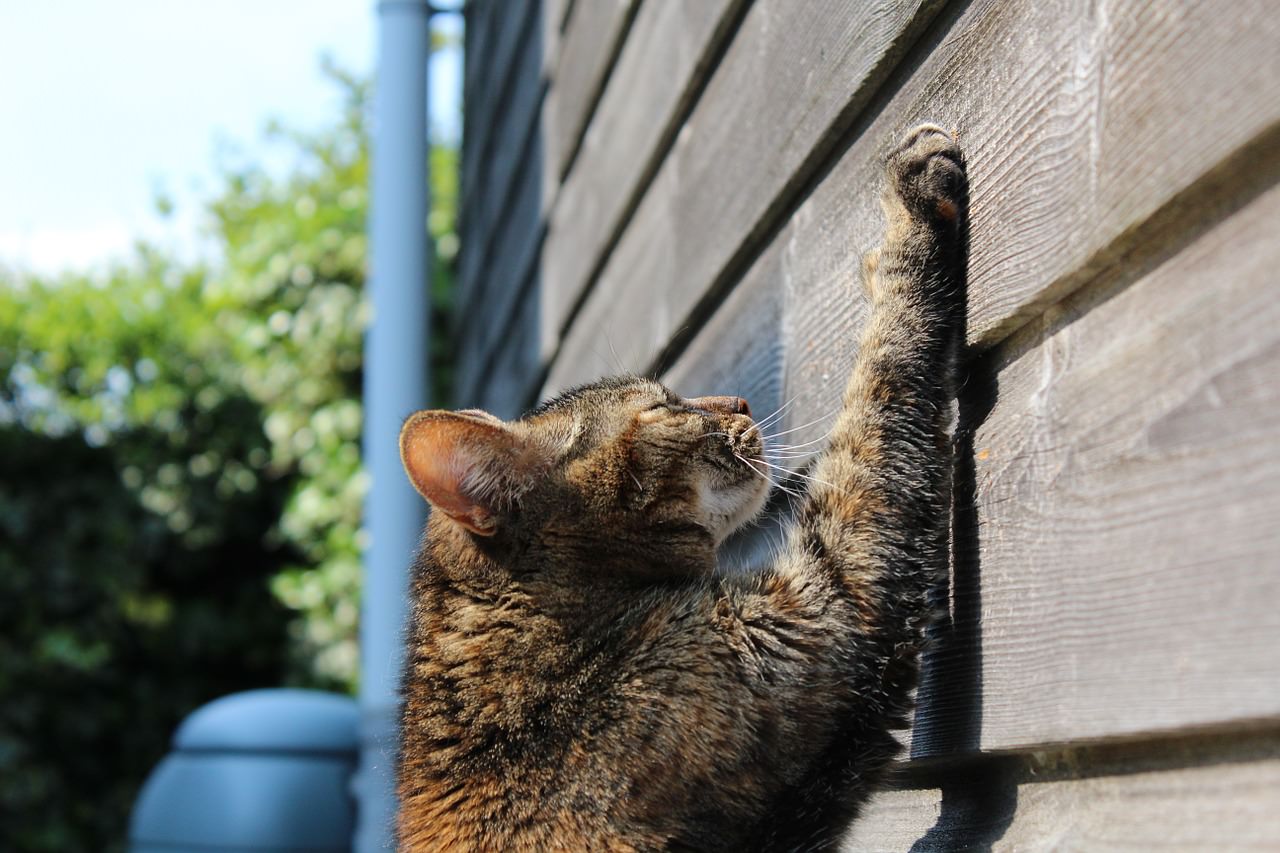Scratching is a normal conduct for feline species. Cat people expect their cats to mark and claw. Since human beings can communicate verbally, we do not tend to use behavioral messages or engage in behaviors that we do not explain, but cats do. There are three main purposes for this behavior. If you consider why cats might engage in scratching, it can help make this normal behavior better for you both.
Stretch Muscles and Improve Nail Health
We see our cats extend their claws and leisurely stretch back. It is like “cat yoga” in a way. It just looks like it feels good. The same muscles that are used for the scratch-stretch are the ones that cats need to climb and run. Your cat knows that his body should be honed and ready for anything. Cats often engage in the scratch-stretch when they first wake up or at meal times. The best scratching surfaces also help improve claw health by smoothing rough edges and encouraging healthy circulation to the toes and nail beds.
Visual Marking
Cats can leave a visual calling card for other cats with the marks left when they claw. Since they can’t leave sticky notes for family or interlopers, they work with what they have and instinctively mark their boundaries with scratches. Cats might choose corners or couches or highly visible zones at cat height.
Pheromone Marking
Cats can also produce a marking chemical between their toes (interdigital semiochemical) that they release when they scratch. This chemical leaves an invisible message for other cats. It is an instinct for cats, so even if your cat is the only cat in the home, she still feels compelled to leave these notes. Not only do the pheromones potentially leave messages for other cats, they are also useful to your own cat as she marks her “safe zones.” Just like humans like to decorate their homes with familiar and attractive things that they like, your cat’s pheromones make her feel calm and safe.
When you understand why your cat engages in this behavior, it helps you to direct it. Being aware that you need to work with her behavior – and cannot eliminate it – helps, too. You can guide your cat’s choices. Some cats like to scratch on vertical surfaces at or slightly above their eye level. Others like substrates flat on the ground. Rough materials that help smooth the nail edges can be desirable. Give lots of options with a variety of textures, vertical and horizontal.
If your cat is choosing to scratch something that is valuable to you, you can discourage it by making the item less attractive to the cat. Some people have tried surrounding a spot with aluminum foil or spraying with pet safe air freshener. There are motion-triggered misters that can discourage cats from choosing certain spots. Just be sure that you offer a viable alternative, like a scratching post, because your cat cannot help her drive to engage in scratching.
Find a spot that you are both happy with and let her scratch whenever she wants to. You will both be happier. Try stretching with her. Maybe she’s onto something because it feels really good!
Love cats? Me too! Find out more about them by finding me on Facebook. Click here.

